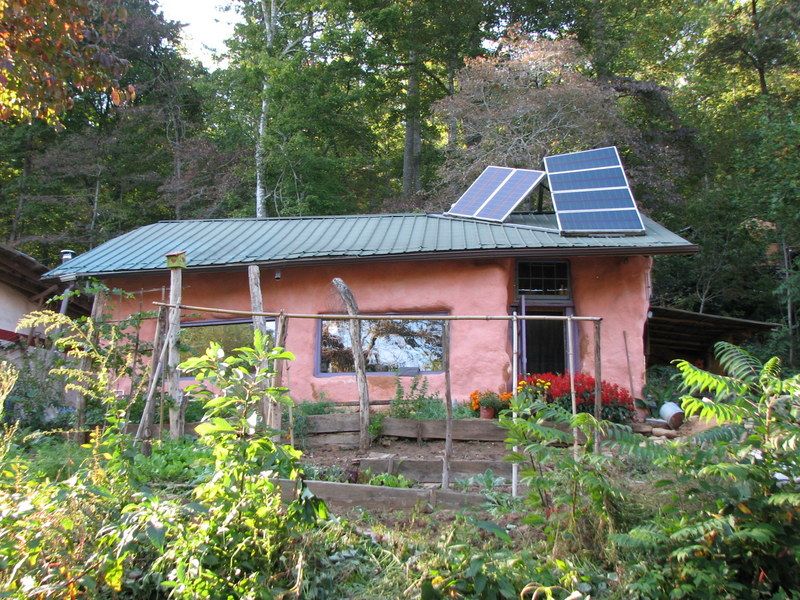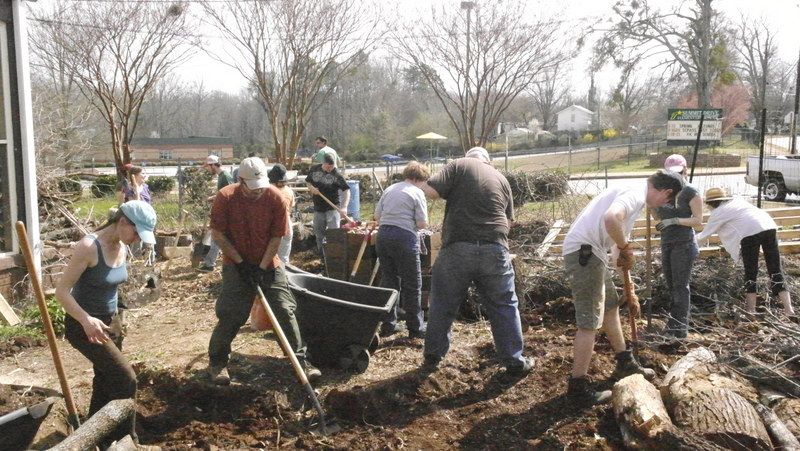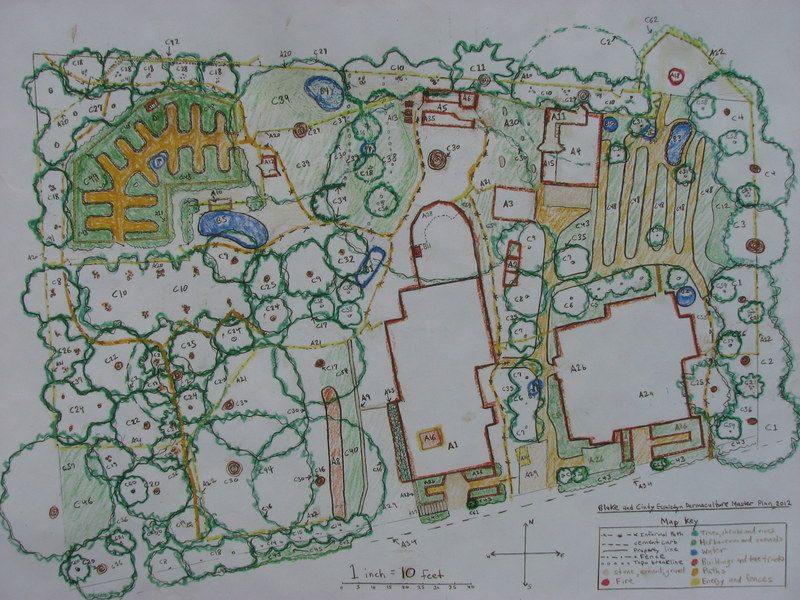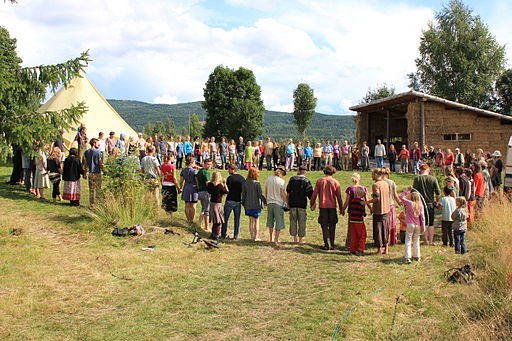 |
| Photo Caption: One of the houses at Earthhaven Ecovillage in Asheville, NC |
We started out recommending the free PDC videos at the Regenerative Leadership Institute. Most of the members who watched these videos didn't like how unstructured they were and their poor audio. Larry Korn seems like a fascinating guy to have a conversation with, but not the most intuitive instructor. Additionally, in the last month many respected permaculture organizations have come out against the founder of RLI (not Larry Korn) due to complaints of scams and poor personal relations with customers. Fortunately, we've discovered that Will Hooker from NC State has put up even more of his class lectures and they are of excellent, high tech quality with locally relevant info. We're now recommending them instead of the RLI materials.
Though it is possible to do the materials on your own, we suggest SCUPS members ask around to form groups of 2-4 families who then learn the materials as a group. We also recommend that you give your SCUPS PDC group a name because then we can discuss each group's activities on the Facebook page without getting confused about who is doing what. (the name "SUPA BOB" is already taken by our group so even though you probably wanted your group to be called "SUPA BOB," you have to pick something else -- sorry). :)
You can set up your group any way that suits you, but here's a suggested curriculum that is working for SUPA BOB:
SCUPS FREE PDC CURRICULUM:
Materials
- Professor Will Hooker's free "Introduction to Permaculture" course videos from NC State University
- Print a free ebook copy of "20 Principals of Permaculture" -- combines David Holmgren's & Bill Mollison's permaculture principles along with examples of how to use them and is a great reference.
- Purchase or check out from the library a copy of Gaia's Garden by Toby Hemenway (Will Hooker assigns reading from it during the course)
- Purchase or check out from the library a copy of Introduction to Permaculture by Bill Mollison (Will Hooker assigns reading from it during the course)
- Plan to look up additional assignments online as Will Hooker mentions them in the videos. He often recommends videos to watch or articles to read. They're usually free.

- Ask around on the SCUPS Facebook group or at SCUPS events if there is anyone in your area who wants to join up for a group PDC. We recommend keeping it small at 2-4 families and preferably people whose homes are not too far away to easily drive to.
- SUPA BOB meets 2x a month at each others houses, usually on weeknights, to discuss the materials we already watched and read. We rotate between member's houses so it spaces out the hosting duties -- the host serves the main course and the other members bring no-fuss potluck side dishes or beverages. Some groups may elect to watch the videos as a group, but we personally found that we wanted to talk about our opinions and prefer to watch them & read the homework before the meeting.
- SUPA BOB also meets 1 or more times a month at each other's houses, usually on a weekend, to do permaculture projects in each other's landscapes. This is also on rotation between member's so everyone gets a turn.
- We found that only watching one video per 2 weeks would take multiple years to complete, so we grouped assignments to speed things up. Here's two photos of the spreadsheet that Kirsten Robertson made for our group. We filled in a member's house and meeting date for each video grouping. For example, the Robertsons might host the "Introduction" section, 2 weeks later the Lords might host the "Kirby Street Example" section, and 2 weeks after that the von Franks might host the "Forests, Trees, Site Analysis and Design" section. (Click to see larger images or contact Eliza or Kirsten if you want an editable copy of the original spreadsheet file so you can personalize it for your own group):
 |
| Photo Caption: Contact Eliza or Kirsten for a copy of this spreadsheet file that you can edit for your own group. |
- Finally, take notes when you are watching videos or reading material so you have a list of things to discuss when you attend the meetings (unless your group decides to watch the materials together).









